 How much can you afford to spend to promote a series when you have a new book coming out? Let’s say Book 1 has been out for a while and you have Book 2 coming out shortly. You decide to run a discounted price promo for Book 1 hoping to get sell through for Book 2. It’s a common tactic and it is known to work. We use it quite regularly. But people have to know about the discounted promo, so you decide to either run some ads focused on Book 1, run some stacked promos with some of the reputable sites (BookBub, Fussy Librarian etc) or a combination of the two. But how much can you afford to spend on those promos and ads?  Because of its discounted price, Book 1 isn’t going to give you much of a financial return (in fact, we’re going to totally ignore it), so you are going to be relying on Book 2 selling well in order for you to end up in profit. Unfortunately, you don’t have any sales data on which to base any assumptions about sales for Book 2, so you could spend a lot of money on your promos and ads but end up making a loss. That is what this blog is all about. We have come up with a calculation to allow you to forecast your royalties for Book 2 so you can make an informed judgement. But first some “health warnings”.  1. This method provides a forecast, not a prediction. It is not guaranteed that the reality will match up. 2. You will have to base some of your calculations on historical data which might not be replicated in the future. 3. It makes some assumptions based on industry benchmarks and your books may not perform to the benchmarks. 4. Because of 1 – 3 above, the figure you end up with is “ball park”, an estimate. It may not be 100% accurate. But that is a limitation we feel is acceptable. Please bear those health warnings in mind when you do your own calculations.  Your first step is to gather data on the cost of your promos (before you actually pay for them), which means looking at the promo sites and identifying the cost of the packages you want to use. Add those costs together to give you your promo costs, which I shall refer to as PC. Next decide what daily budget you want to set for your ads and for how long you wish to run them. So, if you want to set a £5 daily budget and run the ads for 5 days, that’s a total of £25. We’ll call that AB for advertising budget. Add AB to PC to give you an overall cost for your marketing, which we will call MC for marketing cost. Next you need to look at your historical sales data. If you have run a discounted promo for Book 1 in the past, how many books did it sell? If you are running a Kindle Countdown Deal, you may have to go back 90 days or further to find that out. If you haven’t run a discounted promo before, work out your average daily sales for the previous 90 days (total sales over 90 days divided by 90). A discounted promo would be expected to sell more copies than the 90 day average, but we don’t know how many more so we have to stick with data that we know is accurate. Whichever figure you are using, we will call it SD for sales data.  The benchmark for “read through” from Book 1 to Book 2 is 70%, which means that for every 100 copies of Book 1 you sell, you can expect to sell 70 copies of Book 2. So, work out 70% of SD to predict how many copies of Book 2 you can expect to sell per day during the promo period, then multiply by the number of days over which you are going to run the promo (PD), so the sum will be SD x 70% x PD. That will give you your forecast sales (FS) for Book 2. Now you have to calculate your royalties for Book 2. The amount per book is displayed on the pricing tab of your KDP pages for the book, so it is FS x R (for royalties) to give FI (forecast income). If you divide FI by MC you will get a number. If that number is less than 1, then your promos and ads are forecast to run at a loss. If you get a number greater than 1, your promos and ads are forecast to give you a profit.  If you have forecast a loss you have some decisions to make. 1. You can decide not run your promos, not to run your ads or both. 2. You can reduce the number of promos you run, select cheaper packages if there are any, or reduce your daily budget for your ads or a combination of all of those. 3. You can go ahead as planned, hoping that the forecasts are wrong, and you actually sell more copies of Book 2 than expected. But that is much riskier. If you are going to take risks like 3, then you may as well not do the calculations in the first place. If, on the other hand, you have forecast a profit, you could increase your marketing budget in the hope of generating even more sales for Book 1 which should translate into even greater sales of Book 2. What if you have more than two books in the series? OK, that means you will have to forecast sales for Book 2 to Book N, where N is the number of books in the series. First of all, you have to know that it is normal to lose readers after each book, so the audience gets smaller the longer the series runs. There are a variety of reasons for this, some of which are reader related and some of which are author related, but those are the subject for a different blog. I have already told you that the benchmark read through rate from Book 1 to Book 2 is 70%, but the readthrough to Book 3 is 90% of that 70%. The read through to Book 4 is then 90% of that 90% etc. Below is a table showing how many copies of each book in a 9 book series you can expect to sell if you sell 100 copies of Book 1. You can extrapolate those for however many copies of Book 1 you actually sell (figures have been rounded to the nearest whole number).  Using the table, you can calculate your total FI from read throughs using the method described above, to work out whether your campaign will make a profit or loss. You will notice that I haven’t mentioned KENP reads from KindleUlimited. That’s because they would muddy the waters quite a bit. If you have solid income data for those page reads which relate directly to previous promos, you can add that into your FI if you wish, but it is a simpler calculation to leave them out.  OK, we will be the first to admit that this method is a little bit “rough and ready”. But ask yourself this question: “Is it better to have a rough and ready calculation, or no calculation at all?” We think you will conclude that rough and ready is better than nothing when it comes to risking your money. Before we end this blog, we have one more thing to say about those benchmark figures. They are based on industry averages for read throughs for a series. However, we don’t know what the shape of the bell curve is that produced those benchmarks.  It is highly likely that bestselling series like Harry Potter, Jack Reacher, Game Of Thrones etc are skewing the figures and producing a high average. That means that it is possible that your Indie pubbed space opera or dark fantasy series isn’t going to achieve a 70% read through from Book 1 to Book 2. That is a reasonable assumption to make. However, if your series is achieving less than a 50% read through rate, you need to be asking yourself why. What is it about Book 1 that is discouraging readers from reading Book 2? Is it a marketing thing? Or is there something wrong with Book 1 and readers don’t like it, so they aren’t buying Book 2? You have to decide that for yourself. If it’s something wrong with the book, your reviews will probably tell you, but that is by no means certain. But something is definitely wrong, and you need to find out what it is, or you are going to be spending a lot of money on promos and advertising for little or no return. If you have enjoyed this blog, or found it informative, then make sure you don’t miss future editions. Just click on the button below to sign up for our newsletter. We’ll even send you a free ebook for doing so.
0 Comments
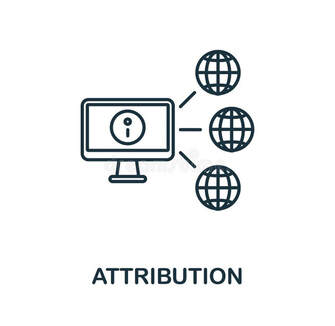 One of the problems that Indie authors have is trying to work out whether their social media marketing strategy is working for them. How does the author know if a sale has resulted from a random search on Amazon, what we call “organic traffic”, or if it has come from someone clicking on a link in a social media post or even from an advert posted somewhere like Google Ads?. This information is important for Indie authors. They spend a lot of time on social media, finding followers, building relationships, creating posts etc. They need to know if they are wasting their time, or if they need to invest more time on Platform A and less on Platform B.  The inbuilt metrics may tell them how many link clicks they are getting, but they won’t tell them how many of those clicks are being converted into sales and that conversion tells an important story. Some Indies go as far as paying for advertising on social media, or on sites such as Google Ads or on book promotions sites. How do they know if those adverts are actually resulting in sales? They may know how many clicks they are getting, but are those clicks earning them money – or just costing them money? This is vital information, because if clicks aren’t converting to sales, it means that there is something wrong with the sales page. It may be the cover image, it may be the blurb, it may be the free sample, or it may be the reviews – or lack of reviews. (BTW – this blog won’t help with diagnosing problems that are on the sales page. That is a whole different blog. Probably several blogs.) The KDP reports tell you how many sales or page reads you have had, but they don’t tell you where they came from. Connecting the different bits of information together to give you the whole picture isn't possible. So, wouldn’t it be wonderful if there was a way of tracking sales back to the place where the reader found out about your book? 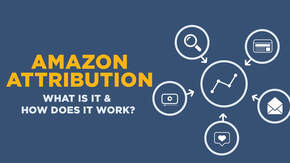 Well, there is. It’s called “Amazon attribution.” It’s FREE and it’s provided by Amazon itself, through Amazon Ads. Basically, what you do is create a unique link which allows Amazon to track the click back to its source. So, if the link is posted into Facebook and someone clicks on it there, then buys the book, the sale will be attributed to the Facebook post. Not only will this help you to identify where your sales originated, it will also tell you where you are getting your best results.  Did your best sales come from a Google Ad? Or did they come from a Facebook post? If it’s from a Facebook post then you might be better off not advertising on Google, but advertising on Facebook instead. Or on X, or Instagram or wherever you are getting your best results. This may also save you money, because you can now compare different platforms directly from which ones are selling your books. If you advertise on Amazon you will know if you get sales because the Amazon Ads data will show you. But what about Google Ads? From their metrics you will know if you got clicks, but you won’t know if those clicks turned into sales. With “Amazon attribution” that doubt is removed. Now, if you use a lot of sites for your marketing you will have to create a lot of attribution links. There is no point in using the same link on several sites because that doesn’t tell you which site is working best for you. You will need one link for Facebook, one for X, one for Instagram, one for Google etc. You can even use attribution links on your own website if you have one, to track sales that originate there, or to email shots and newsletters.  If you are running ads targeted at one particular country, say the USA, then you will need to make your link unique to Amazon.com sales. If you are targeting the UK as well, you will need a link for Amazon.co.uk. Etc. If you are selling on both, but you don’t know where your best sales are coming from, you may want to track sales in the two countries individually. So, you may have one link for Facebook post trying to get sales in the USA and a different link for Facebook posts aimed at the UK, even though you are using identical images and text to try to reach both countries. This could mean you creating a dozen or more links – but the information each link gives you will save you a lot of time and possibly a lot of money in the future as you will be able to make better decisions about your marketing strategy. Just to set your mind at rest, if you already have an Amazon Ads account then creating a link takes about a minute. If you haven’t got an account, it will take a bit longer because you have to set up the account first. 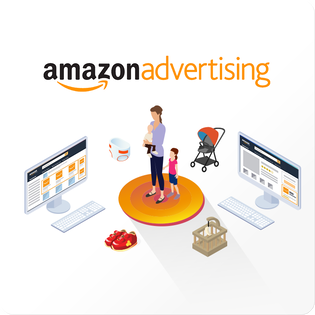 So, how do you get an “Amazon Attribution” link? The following instructions are aimed at use with a PC or laptop. I don’t suggest doing this on a phone or tablet because the screens will look different. I have created a short video (posted after the written instructions) which takes you through the process.. First of all, you need an Amazon Ads account. If you haven’t got one already, then you can create one direct from your KDP account. On your Bookshelf look to the right where it says “action”, click on the three dots. Find “promote and advertise” and click on it. Find “Run an ad campaign” and then locate the button marked “choose” and click on it. You will get a drop down list of all the Amazon marketplaces where you can advertise. If you are running campaigns aimed at different marketplaces and want to track each marketplace individually (recommended), you will need an ad account for each marketplace, though Amazon are planning to merge marketplaces for advertising in the near future, so by the time you read this that information may be out of date. I suggest you start with the country where you are based, or where you sell most of your books. For us that’s Amazon.co.uk but for you it may be somewhere different. Once you have selected your marketplace, you will get a new button displayed which says “Create an ad”. Click on that. You will then be taken through the usual pages needed to create an account if you don’t already have one, before you finally get to the “Ads Dashboard”. There is no need to create an actual Amazon Ad. They cost money. If you want to run Amazon ads that, again, is a whole different blog (which we have already published - look in our archive under “advertising”). On the left of your screen, you will see a vertical column of symbols which allow you to do various things. The only one you are interested in is the one that looks like a tiny bar chart. Click on that. You will get a new menu and you need to click on “Amazon Attribution.” This will open up a page which is headed “Measure Your non-Amazon Marketing Activities.” Below that is a button marked “Create Campaign”. You guessed it, click on that. This gives you two graphics, one of which says “Create manually” and the other doesn’t. Select the “Create manually” graphic by clicking on it and some boxes will appear below.. The first box asks you to name your campaign. Choose this name with care, because once you have created half a dozen of these campaigns you need to be able to tell which is which, eg which is Facebook and which is Google Ads, or whatever. Below that you will get a list of your books displayed. Scroll through the list and click on “add” to add that book to the attribution results. If you are marketing a stand-alone book, you need only select that book. If you are marketing a series, however, a customer may buy book 1 only, but they may buy other books in the series at the same time (whoop-whoop!). Or they may see the post for book 1, which reminds them that they read it and enjoyed it, and they may use that link to then go to your Amazon page and select Book 2 etc. So, for a series you probably want to select all the books in that series (and the box set if there is one). But, as a minimum, always track Book 1 because that is the series starter. If you have ebook, paperback and hardback formats you can select them all, or you may prefer to create an individual link for each format. That is your choice. We include all formats in the same campaign. Next you create your ad group. This basically provides Amazon Ads with all the information it needs to identify the source of the link when it is used, eg so it knows that it is coming from Facebook and not from Google. So, give the ad a unique name so that you can distinguish it later, when you come to analyse the results. In the “publisher” box select the platform you are using (Facebook, X, Google etc) from the drop down list provided. It is an extensive list and covers most social media and advertising platforms and some etail sites that allow links to be redirected to Amazon. You can also type in new publishers (sites) if the one you are using isn’t listed, eg your own website. If the platform you have chosen is social media, there is no deed to complete the next box. If it is something else, then there are other selections you may need to make. The “Click through URL” box is where you paste the link to the Amazon sales page for your book, in the version you wish to track. The quickest way to get to that is to go back to your KDP Bookshelf and click on “”View on Amazon” (make sure you select the version you wish to track) and then copy and paste the URL when you get to the Amazon page. Note: “View on Amazon” allows you to select any marketplace (territory) where the book is sold. So, make sure you select the marketplace you want to track. All you have to do now is look up to the top right hand corner of the page where you will see a button marked “create” and click on it. It takes a few moments for Amazon to create all the magic that is needed, but eventually you will be given a summary of your entry, along with an attribution URL. That URL is very long, but it is the one you then copy and paste into whatever activity you want to monitor. For example, if you want to monitor a Facebook post, you paste it into the Facebook post instead of the link you would normally use. Here's the video demonstration we promised. Using Facebook as an example, if anyone clicks on the link to go to your Amazon page the click will be recorded by Amazon and if they then buy your book the sale or download KENP (KindleUnlimited pages) this will also be recorded. From the name you gave the attribution link, you then know which post got you your sale. You view your results using the same “Amazon Attribution” selection in Amazon Ads, by clicking on the “Ad Groups” option instead of “Campaigns”. You can also track different channels (Facebook, Google etc) by clicking on the “Channels/Publishers” option, and you can access your links on the “Attribution tags” option if you want to copy them again for use in a new post.  When it comes to reviewing the results, Amazon are providing you with a free service, so they don’t rush to collate them. It can take several days for some results to appear. You will start to see your link clicks and KENP (Kindle page reads) the day after you post the link. However, in most cases the sales results may not be visible until around Day 7 or even later, An enhancement of the use of attribution links is if you want to try out different posts on the same platform. For example, if you want to see which images work best for your posts, which text attracts more clicks etc, you can create a unique attribution link for each version and then view your results to decide which is getting you the best results. That means you are working less in the dark and taking a lot of the “error” out of trial and error. So, if you are getting sales on Amazon but have no idea where they are coming from, you now know how to track them using “Amazon Attribution”. If you have enjoyed this blog, or found it informative, then make sure you don’t miss future editions. Just click on the button below to sign up for our newsletter. We’ll even send you a free ebook for doing so.  Measurement is the poor relation of marketing. While Indie authors may come to realise that they have to market their books, they don’t always realise the essential role that measurement plays in their decision making. Not knowing how to use measurement in marketing is like walking blindfolded through a room barefoot, with the floor covered with Lego bricks. At some point you are going to say “Ouch, that hurt.” Now, you may think that there is only one measurement that is worth looking at, and that is sales. But you would be wrong. To tell you why, I’d like to present you with a hypothetical scenario.  Let’s say that an Indie author has spent £100 on advertising in a month. They split that 50:50 between Amazon Ads and Google Ads. They have made sales and made a profit on their advertising, so they want to re-invest some of that profit into more advertising.
With that 3rd bullet goes supplementary questions – should they keep the split 50:50 or should they spend more on one platform than the other? The only way to make a sensible decision is to analyse the data and see what it is telling them. What the author needs to know is how many clicks each ad got, how much each click cost them and how many clicks were converted to sales.  To give you a real life example, we recently ran a Google Ad for one of our titles. According to the data we got a lot of clicks on the ad, so you might think that it was a success. However, there was no change in sales volume for the book. If the clicks had been converted into sales, there should have been a corresponding rise in sales volume. Only by putting the two sets of data side-by-side could we see that. The next month we ran an Amazon Ad for the same book. We didn’t get nearly as many clicks as we got for the Google Ad, but we did get a rise in sales. Not only did Amazon Ads tell us how many clicks got converted to sales, we could see it in our KDP sales data as well, in terms of increased sales volumes compared to the previous month. So, going back to our hypothetical example and the 4 questions (plus supplementals) we asked, we might well decide to spend all our budget on Amazon Ads and none on Google Ads. The data was telling us that, so we have no reason to doubt our decision making.  But the story doesn’t end there. If we were getting so many clicks from Google Ads, why weren’t they getting any conversions into sales? Normally we would say that it has something to do with the book’s blurb, the reviews or the free sample. Maybe they weren’t enticing enough. But if that were the case it would apply to the Amazon Ads as well, which we know wasn’t the case. So, we have to look for different answers. When we drilled down into the data, we discovered that the majority of the clicks we were getting were from outside of the UK. The book is on sale everywhere, so that shouldn’t make a difference, but perhaps it was. The book is very UK centric in its story. Perhaps that put other nationalities off buying it. We can’t be certain of that, but it is borne out by our KDP sales data. 98% of our sales for that title are made in the UK and Ireland. Again, we were putting data side by side in order to interpret it.  Above, we mentioned the need to understand how much each click cost us. That is essential information, because if we don’t know that we can’t know if our ad generated a profit. Let’s say we got 100 clicks and made 10 sales (that’s a fairly typical conversion rate for a new author). That sounds good, doesn’t it? According to Amazon Ads those sales would be worth £59.90 gross if the book sells at £5.99. Cause for celebration, perhaps? Actually no. Those 10 sales may have been valued at £59.90 gross, but may only have yielded £30 in royalties. If those 100 clicks cost us £35 (again, a typical cost based on 35p per click) then our ad campaign didn’t make a profit, even though it made sales. It made a loss of £5. And don’t forget that £35 is the pre-tax cost. If you are in the UK you have to add 20% VAT to get the final cost. Maybe we would need to re-think whether or not to spend our advertising budget with Amazon Ads too! Again, we have to put data side by side to interpret it and the data may have to come from different sources, eg both Amazon Ads and KDP.  Now, I’m not saying advertising doesn’t work, because it does. What I am saying is that we have to use all the available data to measure the effectiveness of our advertising. If you are spending £100 (after tax) on advertising and you are making £101 in royalties, then whoopee. You are in profit. But you have to know that and that means measuring what you are doing. So far we have only talked about paid advertising. What about social media?  Indie authors spend a lot of their time on social media promoting their books. It isn’t costing them anything except time, so no need to worry, is there? Actually, as the old saying goes, time is money (Benjamin Franklin). All the time you are on social media promoting your books, you aren’t writing new books which could make you more money. So, time has an associated cost. It is therefore necessary to work out if the time you spend promoting your books through social media is actually time well spent. Social media sites provide data on how many people have interacted with a post. That could mean a “like” or a reply, or it could be a click on a link. The more interactions there are, the more likely it is that they will convert into sales.  So, if your posts aren’t getting interactions, you need to know why, because to continue what you are doing is just going to waste your time. If you always do what you always did, you’ll always get what you always got. This may mean asking other people what they think of your posts, so you can work out what is most likely to get an interaction. Also, you need to “benchmark” against posts that get a lot of interactions to see what it is about them that makes them so attractive. 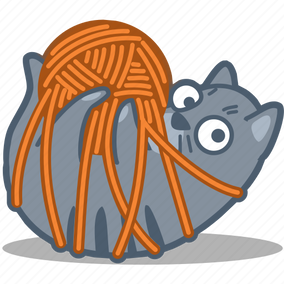 Of course, we mean posts that promote books. Knowing that posting a video of a cute kitten playing with a ball is going to get lots of interactions, isn’t going to help you to sell any books. Lots of authors think that asking questions on social media and getting a gazillion answers is interacting. It isn't. yes, the post gets a lot of responses - but is it selling books? If it isn't selling books it is just wasting time. So, some of the data that has to be compared are interactions compared to books sales. Do they line up. If not, why not? But knowing that a video gets more interactions than a still image might also be useful to know. 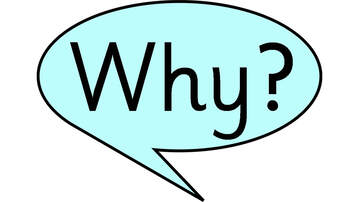 But with measurement you must always ask the question “why”. - Why aren’t my posts getting interactions?. - Why aren’t interactions on social media converting to sales? - Why aren't my video clips getting more interactions? Etc. I can’t answer those questions for you in a blog. I can’t even think up all the questions you might want to ask. But there will be answers. You just have to go looking for them. Social media sites provide all that data for free. All you have to do is use it. Measurement and data analysis isn’t very exciting stuff. But using it wisely can make your book sales very exciting. But, like all of book marketing, you have to invest time into it to get the best out of it. But it could help you avoid those Lego bricks. If you have enjoyed this blog, or found it informative, then make sure you don’t miss future editions. Just click on the button below to sign up for our newsletter. We’ll even send you a free ebook for doing so. 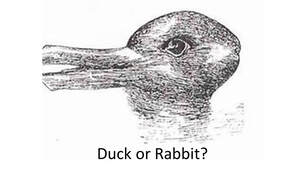 Once again I’m indebted to the users of Twitter for the inspiration behind this week’s blog. The theme is how perceptions don’t necessarily match up to reality. The Tweet(s) in question relate to an author bemoaning the fact that someone had posted rude 1 star reviews about two of her books on Amazon and she feared this was impacting on her sales. They were also undermining her confidence and making her ask herself if she should continue working on her third book. I Tweeted back (sympathetically I hope) that reviews weren’t everything and, at the end of the day they are an opinion, and no author can please everyone. If they had valid criticisms, then it was a good idea to learn from them, but otherwise forget them. There are also people who delight in posting 1 star reviews, just because they can. (I know, we live in a truly troubling world) 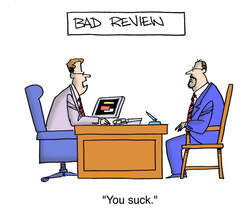 In her reply the author posted a screenshot of her review data, the yellow bars Amazon uses to show the percentages of reviews for each star rating. And it was highly revealing, but not in the way she thought. Out of around 240 reviews, over 60% were 5 star and another 20% were 4 star. I pointed that out, suggesting the (approx) 10% of 1 star reviews weren’t something to worry about. The number of 4 and 5 star reviews would be far more influential than the 1 star ones when it came to decisions about purchasing. She didn’t agree with me, suggesting that her KENP reads had dropped since the 1 star reviews had been posted. I suggested that she would need a bit more evidence than that in order to draw such a conclusion. Perhaps her KENP reads had dropped because her marketing activity needed refreshing. I think I may have persuaded her, because she did say she would think about that. Or maybe she was just trying to shut me up, which is a real possibility. 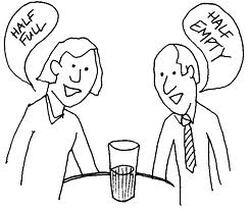 But it is easy to take an isolated bit of data, such as reviews, and interpret them as something they aren’t. Looking at her numbers, I would be using the percentage of 4 and 5 star reviews to trumpet the success of our books, in order to encourage new readers to try them. That screenshot she posted tells a far different story to the one she was seeing, as far as I was concerned. Because 80% reviews at that 4 and 5 star level are a real sign of success, not failure. It is always dangerous to take two bits of data, put them side by side and assign cause and effect from them. In this case a couple of 1 star reviews put alongside a drop in KENP reads equals a cause and effect. 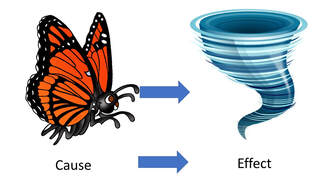 Cause and effect? Cause and effect? A third bit of data is needed in order to see if that is a valid conclusion. In this case the third bit of data would be a measurement of marketing activity: social media posts, advertising spend etc. If there is a lot of marketing activity but a drop in KENP reads, then the author may be right in her original conclusion. But if there is a drop in marketing activity at the same time as a drop in KENP reads, then perhaps it isn’t the 1 star reviews that are the cause, perhaps it is the lack of marketing. It is very easy to let our perceptions and emotions get in the way of interpreting our data. In this case it is possible that the author is (a) underconfident and (b) sensitive to criticism. I can’t prove that because I haven’t got all the data available, but it seems to be a reasonable conclusion to draw on the basis of what she said in her Tweets. 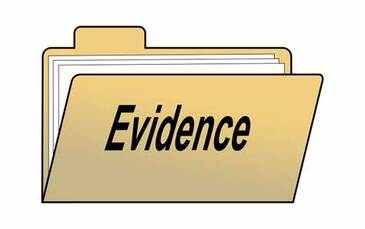 That under confidence, combined with the sensitivity, led the author to draw a conclusion that supported her perceptions and, despite what Lee Atwater may have said, perception is not reality, it is only the perceiver’s reality. Perception may be reality, but it isn’t actuality (Bill Cowher) and you have to be able to tell the difference if you want to market your books effectively. In this case it was the perception that 1 star reviews were affecting KENP reads, when the actuality might be a lack of marketing or perhaps another, undiscovered, reason. As statisticians will tell you, correlation does not imply causation. More evidence is needed. So, if you want to diagnose problems such as drops in sales levels, what can you do?  The best thing is to use several different types of data alongside each other and see what, together, they are telling you. KDP provides you with a lot of information on sales and KENP, but it doesn’t tell you anything about your marketing activity. This means that you need to have some measurement of marketing activity that you can analyse. If you use paid advertising, there is a mountain of data that can be obtained in relation to the performance of your ads. The most important bits are conversion rates. Eg how many impressions (views) did your ads get and how many clicks on the links did that convert to. Then how many of those clicks were converted to sales. The experts suggest you should be expecting at least a 10% conversion rate of link clicks to sales to consider an advertising campaign to be successful. But if you don’t use paid for advertising, you only use social media, you have to look elsewhere for your data. But the same principles apply. How much engagement did you get for the social media posts that pitched your books? How many clicks on the links etc.  The lower the numbers are, the less likely it is that you made sales or KENP reads. If you got high engagement levels but low sales, it means that readers looked at your book but chose not to buy it and there are many reasons why that may be. Reviews are one of them, of course, but they aren’t the only one. There is your cover, the blurb and the ‘look inside’ portion of the book as well. I would say that all three of those are a more likely reason for a reader not buying than having 10% 1 star reviews when 80% are 4 and 5 star. I’m not saying reviews aren’t important. Readers often send us important information tucked away in a poor review and that information can be used to improve writing. But, as I said before, a review is just an opinion and, in some cases, it isn’t even that. It may just be some poor soul being nasty because it makes them feel good. And that contaminates the data, just as an author getting their Mum to post 5 star review contaminates the data. But importantly, don’t let perception become your reality if you aren’t sure it is also the actuality. Correlation isn’t the same as causation (well, sometimes it is but that is a whole different blog). If you have enjoyed this blog, or found it informative, then make sure you don’t miss future editions. Just click on the button below to sign up for our newsletter. We’ll even send you a free ebook for doing so.  I think it is fair to say we get a lot of our ideas for blogs from Twitter and other social media sites, especially those used by authors. Be careful what you post, because you might well get a mention here. Not by name, of course. We would never do that. So it is this week, with a Tweet we saw a few weeks ago from an author (we sometimes write our blogs several weeks in advance of their publication). The Tweet was actually in two parts. The first part related to the way an author’s book sales had fallen off over recent weeks. By ‘sales’ we also mean KENP read using KindleUnlimited etc. A blog we posted a couple of weeks ago covered some of the reasons why sales vary on a seasonal basis, so we won’t cover that ground again (scroll down a bit if you want to find out more). But, of course, it’s not just the season of the year that affects sales.  We like to think of book sales a little bit like the way we think about tending houseplants. If you give a houseplant just the right amount of attention at just the right time, it should flourish. Well, a healthy plant in a disease free environment should live a long and happy life if it is given the right care and attention. But if you don’t give the plant the right care, or enough attention, or you give it at the wrong time, it will die. The same applies to giving it too much attention. The phrase ‘killing with kindness’ may have been invented for houseplants (if it wasn’t, please don’t email to tell us – put it in a blog of your own).  So it is with marketing a book. Given the right attention at the right time, your books should still sell even if seasonal factors are against you. That’s providing they are readable, of course – it’s hard to sell a poor quality book, ie one that has a ‘disease’. If you don’t do enough marketing or you do it at the wrong time or in the wrong way, your books won’t sell. And you can do too much marketing, killing the book with kindness so to speak, because readers get fed up with seeing your marketing efforts. Our response to the Tweet we saw was to suggest the author think about taking a look at her marketing strategy to decide what might be needed to lift her sales. The second part of the Tweet was about the author’s fixation with checking her sales data on KDP. She seemed to be looking very five minutes (I may be exaggerating) but she knew it wasn’t healthy.  For Indie authors I can quite understand the need to constantly check sales data. Sales provide validation for the author that their book is ‘good enough’. An author who has an agent or a mainstream publisher doesn’t need that sort of validation. They have already had their fix by getting the agent and/or the publishing deal. But for Indies there is little other than sales data to tell them that readers like their books. Reviews are the other form of validation, of course, but they are opinion based and therefore subjective, whereas sales data is empirical. Numbers don’t have an opinion. To paraphrase an old business saying: reviews are vanity, sales are sanity. 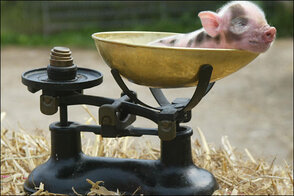 You don't fatten a pig by weighing it. You don't fatten a pig by weighing it. But you don’t fatten a pig by weighing it, as the saying goes (apologies to vegans, Jews and Muslims). Weighing your pig tells you if it’s gaining weight, but if you aren’t using that information to adjust your pig’s diet, then knowing its weight doesn’t achieve anything. OK, it’s a heavy handed metaphor (it was a heavy pig) but it makes the point. Knowing your sales data doesn’t sell more books. Knowing your sales data tells you whether or not your marketing strategy is working. If you aren’t making sales, or not as many sales as you think you should be making, then that is telling you to look at your marketing strategy so you can change it to make more sales. But if you make changes to your strategy, you have to give them time to work. Checking the figures every five minutes doesn’t help. It may just lead to frustration and, in extreme cases, it may actually be harmful to mental health.  By marketing strategy, we don’t just mean your advertising or social media posts. Book covers and blurbs can both have an effect on sales and need to be quality checked to make sure they are doing their jobs. The “look inside” feature on Amazon is also part of your marketing. If you don’t capture the reader’s imagination in those few free pages, you may not make the sale. The way you word your social media posts, what sort of images you use and a whole raft of other considerations also play their parts. We blogged about all of that last autumn, so we won’t go into those again today. If you want to know more, check out our archives under the "marketing" heading. So, Indie Author who inspired this blog, we hope we have reassured you that checking your sales data is actually quite normal. But we hope we have also encouraged you to take the information provided by that data and make use of it, so that your sales will look after themselves and you don’t have to check them so often. If you have enjoyed this blog, or found it informative, then make sure you don’t miss future editions. Just click on the button below to sign up for our newsletter. We’ll even send you a free ebook for doing so. Disclaimer: This blog talks a lot about Amazon, but we are not connected to them in any way other than they sell our books. We are definitely not being paid to mention their name and we are not recommending Amazon. We are just recounting our experiences in the hope of passing on some of the knowledge we have gained.  As an author who sells through Amazon, you will know all about “sales ranking”. If your book sells, the ranking improves and people are encouraged to buy your book because other people have bought it. And if your ranking is low, people think your book isn’t any good because other people aren’t buying it - but that is flawed logic. Just because a book isn’t selling it doesn’t mean it isn’t any good. It may just mean that nobody knows about it (we blogged about advertising last week, so we’re not going to go back over old ground). But you won’t convince some readers that a book is good if it isn’t selling and there’s not much we can do to change that mindset.  We have been fortunate over recent weeks that several of our books have sold well and their sales rankings have improved exponentially. Instead of being in the 7 digit ranking range they are into the lower end of the 5 digit range – and are still climbing. That’s for their overall, ranking of course, not the category ranking. In some obscure categories its possible to be the No 1 bestseller just by selling a single copy. So that isn’t a good comparison for the purposes of this blog. But we believe our books’ rankings should be higher still and we also believe that the way Amazon calculates their rankings doesn’t take into account a whole raft of “sales” through their own platform. I’m referring to Kindle Unlimited (KU) pages read. While they may not be direct sales, the way that a book is sold, the reader is still paying to read the book through their KU subscription and the author is still getting an income from those page reads. So, it is our contention that those page reads should be included in the calculations of sales rankings, which are an indication of the popularity of the book. KU page reads account for about two thirds of all our sales income (more for some individual titles). It is the equivalent of a lot of books sold. But Amazon doesn’t count them and there is no valid reason, as far as we can see, why they shouldn’t. In fact, it might actually be to Amazon’s benefit to include KU pages read, because the more popular a book, the more copies it sells and the more money Amazon will make from those sales. They are, effectively, depriving themselves of potential income with their current policy. I’ll use just one of our titles as an example of what we mean. "Our guestimate is that it would put the book into the top 1,000" But before we go on, a quick bit of jargon busting, for those of you who might need it. KENP means Kindle Edition Normalised Pages. It is the number of pages that Kindle Direct Publishing uses to calculate an author’s royalties for KU downloads. The more pages read in a book, the more the author gets paid. It is used to factor in the different font sizes and line spacings that authors use, which makes direct comparisons between the number of pages in a book problematic. We’re not sure how the KENP for a book is arrived at, but we suspect it may be based on character or word counts Mansplanation over, back to the blog.  Operation Absolom is the first book in Robert Cubitt’s “Carter’s Commandos” series. In July 2022 it sold 11 copies. This elevated it to around 30,000 in the Amazon rankings at the time. Although Operation Absolom is 296 pages long in paperback, its KENP is 437 pages. During July 2022, 19,215 KENP pages were read using KU. Divide 19,215 by 437 and it works out at 34 complete books. So, if 11 books sold gives Operation Absolom an average sales ranking of about 30,000, what would another 17 books give it if they were included in the figures? (BTW it actually peaked at around 10,000 - 7/7/22) Our guestimate is that it would easily put the book into the top 1,000, which makes the book look very popular indeed – as it is in reality. OK, we’re not talking J K Rowling or Lee Childs popular, but it is a lot more popular than a million other books on Amazon. "Perhaps weight of numbers might encourage a shift in policy" We could quote similar figures for the rest of the Carter’s Commandos series, because once people have read the first book it is clear they are then reading the rest of the series. But you get the idea from the one title we have used as an illustration. But it doesn’t look like that on Amazon. So, what can we do about it? We have already emailed Amazon to ask them why they won’t change the way they calculate their sales rankings. After all, they have all the data to hand and doing a new calculation that includes KENP would hardly be rocket science. This was their reply: “Sales rank is determined by a number of different inputs and may change over time. Amazon is constantly working to improve the quality of information available to our readers and authors. Please note that Sales Rank fluctuates every hour in line with customer demand and in relation to the demand for other books, both of which may vary based on factors such as popularity of new releases, seasonality, etc. Rankings reflect recent and historical activity, with recent activity weighted more heavily. Rankings are relative, so your sales rank can change even when your book's level of activity stays the same. For example, even if your book's level of activity stays the same, your rank may improve if other books see a decrease in activity, or your rank may drop if other books see an increase in activity. When we calculate Best Sellers Rank, we consider the entire history of a book's activity. Monitoring your book's Amazon sales rank may be helpful in gaining general insight into the effectiveness of your marketing campaigns and other initiatives to drive book activity, but it is not an accurate way to track your book's activity or compare its activity in relation to books in other categories. Thanks for taking time to share your thoughts about considering KENPC in sales ranking calculation. Customer feedback like yours is very important to helping us continue to improve our products and services. I appreciate your thoughts and will be sure to pass your suggestion along. Please refer to our Sales Ranking Help page for information regarding Sales Rank - https://kdp.amazon.com/help?topicId=A21KM4BNAD42EJ”  Amazon sales data - just the tip of the iceberg. Amazon sales data - just the tip of the iceberg. We emailed back to them, saying that they were undermining their own reply. If tracking the effectiveness of marketing is an important use of sale rankings, then Amazon should surely be doing its best to maximise its utility by including KENP data, because that fluctuates in response to marketing activity as well I also pointed out that by not including KENP, they were showing customers the tip of the iceberg, not the whole iceberg. They did reply once more, but only to provide platitudes. But if you are an author and your books are read using KU, then this is something that you should be concerned about as well. So why don’t you add your voice to ours and ask the same question? Perhaps weight of numbers might encourage a shift in policy Let’s face it, you have nothing to lose and your book’s sales ranking have everything to gain. But while we are on the subject of KU, would you like to help other Indie authors to maximise their income? I hope you said “yes” because it only takes a few seconds and will cost you nothing. When you get to the words “The End” in a book, there are often a few more pages left in it after that. They may be a preview of another book or an advert for other titles. It doesn’t matter. Just keep on swiping until you get to the actual end, so that the author gets paid for every last one of those KENPs. It may only be a few pennies (or cents) extra, but they add up. Even if the book wasn’t to your taste and you didn’t finish it, which is hardly the author’s fault, you can make sure they get full recompense for their work by swiping through to the end anyway. As I said, it costs you nothing but a few moments of your time. If you have enjoyed this blog or found it informative (both we hope), be sure not to miss future editions by signing up for our newsletter. We'll even send you a FREE ebook for doing so. Just click the button below. Disclaimer: This blog talks a lot about Amazon, but we are not connected to them in any way other than that we use their platform sell our books. We are definitely not being paid to mention their name and nor are we recommending their services. We are just recounting our experiences in the hope of passing on some of the knowledge we have gained. Here at Selfishgenie Publishing we know that it pays for small publishers and Indie authors to advertise. Not only do we know this, but we have the data to support our arguments. What we have also found, however, is that we can’t rely on some of the data that is provided to tell us if our advertisements are paying for themselves. Over the past 6 months we have been experimenting with our advertising tactics to see which give us the best results. Recently we have been focused on Amazon as the advertising platform of choice. But the first thing we noticed was that the metrics (measurements) provided by Amazon on their platform weren’t matching up with our actual sales.  According to the report for one campaign, we sold x number of books, but according to our actual sales data we had sold yx copies, which was a considerably larger number (sorry to be so vague with the numbers, but that data is privileged information). This is an important difference, because had we believed Amazon’s numbers, we would have concluded that our advertising budget had been wasted. That is because of the ACOS. For those of you unfamiliar with ACOS, it is a calculation that Amazon does to compare the cost of the advert with the income Amazon believes the advert generated It means “advertising cost of sales”. Based on their figures, our ACOS was 198% of what we would get back in royalties as a result of placing the advert. In other words, if we had spent £2 on advertising we would only be getting back about £1 in royalties.  .And that does make it look like we had wasted our money. However, a quick click over to the various websites where we sell our books revealed that we had sold far more books than Amazon knew about – and that included sales through Amazon itself (BTW, when we say “sales” we also include Kindle Unlimited pages read. They account for about two thirds of our total revenue). When we divided the ACOS by the revenue that was actually generated, we got a far lower number, which demonstrated that our advertising campaign was justified in terms of its cost. In fact, for every £1 we spent we got over £5 back. Even after splitting that 50:50 with the author, everyone was making money. OK, Amazon doesn’t know how many books we have sold through other websites and we don’t know how many people have seen our books promoted on Amazon and then gone elsewhere to actually buy them. “Ah,” you might say, “so how do you know those sales were the result of your advertisement?” A fair question. So, why the discrepancy in data? The answer is that we know because the sales were for the same books as we had advertised, or they are part of the same series and there had been a sharp “up tick” in sales coincidental to the dates when the advertising campaign had been run. So, why the discrepancy in data? The first reason is that Amazon does its calculations based on “impressions” and “clicks”. First of all, Amazon Ads measures how many customers had the advertisement placed in front of them (the basis of their charging), either as a result of a search or as a “recommendation”. Then they measure how many of those customers clicked on the link in the advert to take a closer look at the book, and then they count the number of clicks that were made to actually buy (or download) the book. The first number was very high, the second number was lower and the final number was, unsurprisingly, lower still. But what Amazon doesn’t take into account is the psychological effect of the advertising process.  Oh, here we go, he’s wandering off into some metaphysical introspection now. No – I’m not. Please bear with me. Firstly, there is an old adage in advertising that says people have to see an advertisement 7 times before they respond to it. As with all such rules, it is a generalisation. Some people will respond the first time they see an advert, because they have a need for the product and now they now know how they can satisfy that need. Some people, on the other hand, may never respond because they have no need for that product, or because they are very happy with a similar product supplied by a competitor.  But this generalisation around ad campaigns is important, because the author has to to allow time for those 7 exposures to the ad to take place. In all our ads we have noticed that response was lowest at the beginning of the campaign and then increased as time went on, usually from around day 4, until it reached a plateau. We also noticed that sales were highest at the weekend (including Friday evenings), which suggests people buy more books then. So, it seems to be a good idea to time the ad so some of the exposures occur towards the end of the week, for maximum impact. A second reason is that the advert is for a product the reader may have already purchased, but the target is reminded that the same supplier has other products and they go and look at those instead. Eg they see an advert for Heinz tomato ketchup, they already have enough ketchup, but it reminds them they need Heinz baked beans and they go and buy those instead. We know absolutely this was what was happening with our books. We were making sales of titles other than those we were advertising. People had already bought Book 1 in our Carter’s Commando series, the book we were advertising, but they were reminded of the author’s name and went looking for other work by him and bought those books instead. The final part of the conundrum is that sales continued after the advertising campaign had ended. Why was that?  Partly the same as the reason above, the readers went and looked for other titles by the same author after having bought the one we advertised. But part of it was that either the author’s name or the book’s title had been subconsciously planted in the reader’s memory, so that when they saw it pop up in search results later in the month (which we hadn’t paid for) they responded and bought the book. So, what did we learn by running these recent advertising campaigns:
Here endeth the lesson, Go in peace to enjoy the rest of your day. But if you are struggling to make sales, you may need to think about paying for some advertising. We know it costs money, but if your book sells, it will be a worthwhile investment. And if your book still doesn’t sell, you have to ask yourself why readers aren’t responding to it. But that is a whole different blog. If you have enjoyed this blog or found it informative (Hopefully both), be sure not to miss future editions by signing up for our newsletter. We'll even send you a FREE ebook for doing so. Just click the button below. Week 15 - Measure For Measure  This week’s blog is split into two parts, but they are closely related. The first is Search Engine Optimisation (SEO) and the second is measuring the success of your marketing. Now, we would be the first to admit that we are not experts in SEO. If you want one of those, all you have to do is search SEO on Twitter and you’ll find about a gazillion people on there who either are, or claim to be, gurus on this subject and they’ll help you – for a price. But in terms of the completeness of this series of blogs, we would be very remiss if we didn’t mention this subject, so here goes. "helping people to find you, or your books, on the internet" What is SEO? It’s all about helping people to find you, or your books, on the internet and social media. 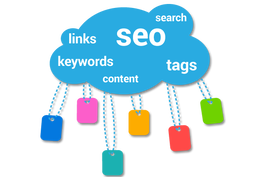 Most blogs about SEO concentrate on promoting a website. Firstly, you may not have a website and secondly, we’re mainly talking about promoting your work through social media. However, people do search for book ideas using search engines such as Google and they also do searches on Amazon and other book selling sites and the same SEO principals apply. People do searches by entering search words and the critical words they use in the query are known as “keywords”. If you are using the same keywords as the person doing the search, there is a high probability they will find you (or your book). But if you aren’t, they won’t. We looked for more information on using keywords on Amazon and this blog was quite useful. According to that article, people looking for books on a particular subject are likely to enter a short description of what they are looking for, rather than single words. This is called a “string” of keywords.  So, in the “keywords” section of your book’s description, you connect together several attributes about the book that someone may look for. For example, if someone is looking for a romantic novel that also involves pirates, they may type in the string “books about romance involving pirates”. I actually typed that into Amazon’s search bar and, guess what, I got several returns of books that involved both pirates and romance.  That approach won’t guarantee that your book is on page one of the search results, but it will certainly be found and it will be in the list somewhere. We found some of the books we published on page one of the results thanks to the keyword strings we have used in their descriptions. Finding the right keyword strings may involve some trial and error. Unlike Google, Amazon’s search bar isn’t so good at predicting commonly used search terms based on what you are typing. We got as far as “Romance in…” when the predictive text gave up and didn’t suggest “including” or “involving”. When we tried “Romance and …” It didn’t carry on predicting past the P in “pirates”. This means that you have no way of knowing if a search terms has been used before. But it is worth spending some time trying out keyword strings that might work with your book and seeing what sort of returns you get. If the keyword strings you enter return books of the type you write, then those are the strings you should be using in your book's description on the retail platforms you use. 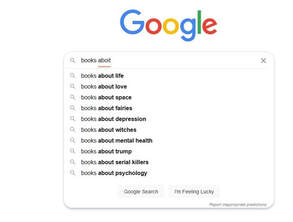 Many readers like following a series, so if your book is part of a series, even if it is only the first, make sure you include “…. book series” as one of your keyword strings eg Sci-fi book series. And if you aren’t getting the results you expected after a few weeks (you have to give things time to produce results), you can try some different strings and see how they work. Importantly, though, if your books use those keywords strings on Amazon (and other retail sites), they will also be picked up by Google if someone searches there for your books. So, you can try doing your searches there first and make use of Google’s better predictive search term capabilities. "The use of the right keywords is also a factor when you use SEO for social media." The use of the right keywords is also a factor when you use SEO for social media. As we said at the start of this blog, we aren’t experts in SEO, so we went looking for people who are and we came across this blog, which contains the key messages.  People do search social media using keywords and hashtags, so having the right keywords and hashtags in your posts will help them find you. Every day Twitter tells you what keywords and hashtags are “trending”, so you can join in the conversations if you are interested in those topics. It’s unlikely that your keywords or hashtags will ever trend, but some of those trending topics may be of interest to your target audience so RT’ing the best of the posts will help with your engagement. But for you, it is using the right keywords or hashtags in your posts so when people do searches on social media using those words, they will find your posts amongst the results. There will still be a crowd of course. If you write romance, then #romance is a hashtag that produces a lot of search results. So, you have to use something a bit more targeted, such as #periodromance or #modernromance. There’s still going to be a crowd, but it will be a smaller crowd. 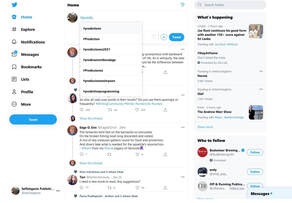 You can also create and use hashtags of your own. If your Tweets are RT’d, those hashtags will become better known over time. Your audience will start to recognise them and they will, perhaps, think of using them for searches. Remember: all hashtags started with someone creating them. Some never catch on, some are still in use years later. Finding hashtags that are already in use is easy enough. When you use the # symbol, predictive text starts to offer you choices of previously used tags. But you won’t know which ones are most popular amongst users. Just because hashtag has been used, it doesn’t mean it is useful. 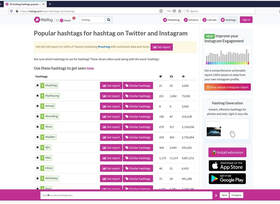 There are websites that will help you to choose the right hashtag. We use Ritetag, which is free. As well as showing you which hashtags are already being used and how visible they are, if you create your own hashtags you can look on Ritetag a few weeks later and see what sort of visibility you are getting. Just one final word on hashtags. Social media users comment on how distracting they are, so the experts advise never using more than three in any post and placing them at the end of the message, rather than within the main body of the text. I was reminded of this just a few moments ago when I was on Twitter and came across a Tweet that was mainly made up of hashtags and immediately scrolled past it. "Knowing how your hashtags are working is useful information" Knowing how your hashtags are working is useful information. If they aren’t working, you need to find a way of promoting them or you need to change them.  Measurement is usually regarded as the boring part of marketing. Besides, there’s only one measurement that you are interested in – book sales. But measurement is pretty important when it comes to creating a successful social media marketing campaign. If you are going to do this well, you are going to start your campaign weeks or even months in advance of your book’s publication. That is a long time to wait to find out that your social media campaign isn’t working. So, you need to measure other things along the way to tell you if you are on the right track.  Think about a long car journey. One way to measure your journey’s progress is to read the road signs and see how far you are from your destination and, if your destination isn’t shown on the sign, how far you are from the next town along your route (known by navigators as a “waypoint”). If you are using a satnav this information is constantly on display, along with an estimated remaining journey time – so you are quite used to doing this sort of measurement. Unfortunately, there is no equivalent of a satnav for your social media marketing so you will have to set up your own measurement system and your own “waypoints”. If you are on the right track – great. But if you aren’t, it isn’t too late to re-think your campaign and try a different approach. In your car journey you might change your route to avoid traffic congestion at some road works and this is no different. Sometimes it only needs a slight tweak to the wording of a message to produce better results.  I’ll give you a real-life example. As part of our generic marketing (rather than targeting a specific title), we Tweet a different “Book of the Day” each day. For a long time, this wasn’t producing much in the way of interest – hardly any re-tweets (RTs) or “likes” and even fewer click throughs to Amazon. These are three of our measurements, used to assess if we are catching Twitter users’ interest. Then one of our colleagues mentioned how hard it was to read some Twitter posts on her phone. The text was so tiny that it was unreadable. She showed me the Tweet and I had to agree with her. I suggested she expand the image, but she said she didn’t have time to mess about like that. "The text was so tiny that it was unreadable" The penny dropped with a very loud clang. That was what was wrong with our images. People use social media a lot when they’re on the move: trains, buses etc so a lot of our Tweets will be viewed on phones and the images we were using weren’t readable on a small screen. So, we changed the format of the Tweets. We made the wording bolder and more eye catching and, instead of using our own image, we let the link connect to Amazon, which then showed the cover image within the Tweet but made it more prominent.  The results were almost instantaneous, with more likes and RTs being recorded. But, thanks to Twitter’s analytics we could see we were also getting more click-throughs to the Amazon sales pages. And then we saw that sales were going up. But if we hadn’t been measuring likes and RTs in the first place, we wouldn’t even have known we had a problem. We use different measurements to establish what levels of engagement we get on this website and we see how different messages on social media result in traffic arriving here. If you clicked on a link on Twitter to read this blog, you will appear in our measurements. Not by name of course, that would breach data protection laws, but you are there in “number of clicks” on Twitter analytics and we also measure the number of visitors we get to this website.  So, measurement may be boring, but it can make the difference between a lot of wasted time and a successful marketing campaign. There is one word of warning, however. You don’t fatten a pig by weighing it (apologies to vegans, Jews and Muslims, but its just a metaphor). In other words, there is such a thing as too much measurement. Business people talk about the “vital few”. These are the critical measurements that tell you how you are performing. It is very easy to let the vital few become the irrelevant many. You can use some measurements for a quite a limited period of time. For example, the only time you are really interested in knowing how many followers you have on Twitter is when you start to establish your social media presence. Once you have a reasonable level of followers all you need to do is check back from time to time to make sure you haven’t lost too many. "work out what you need to measure and when" So, work out what you need to measure and when. At other times, you can let those measurements drift down the priority list and promote some that are becoming more relevant. Measurement is supposed to inform strategy, so if you don't measure or you measure the wrong things, you can't know if you have the right strategy.  This brings us towards the end of this series of blogs. We have discussed the 6Ps of the marketing mix:
We have also suggested a few things that you don’t do, such as blasting out generic Tweets in the hope of catching someone’s eye. And, especially, not paying someone else to do that for you. Hopefully you will now feel more comfortable about trying things for yourself. You will make mistakes – everybody does. Just make sure you learn from them and don’t repeat them. Future blogs are going to be on a wide range of publishing topics and we’ll be hosting guest blogs and posting book reviews (not of the books we publish). So do keep checking back to see what we are doing. As it happens, next week we're posting reviews of 2 books by the same author, each of which is very different in content. And don’t forget to check out our "Books" tab to find out what books we offer. If you have enjoyed this blog and found it informative, make sure you don't miss an edition by signing up for our newsletter. Just click the button. |
AuthorThis blog is compiled and curated by the Selfishgenie publishing team. Archives
June 2025
|

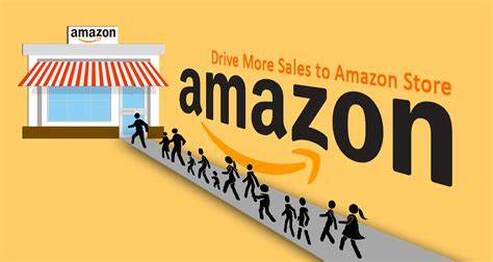
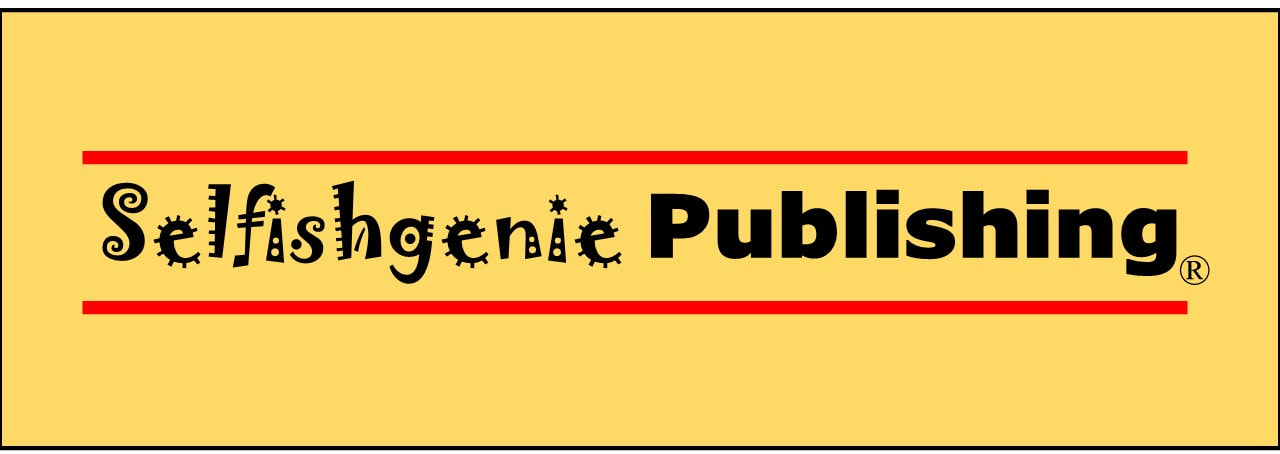
 RSS Feed
RSS Feed